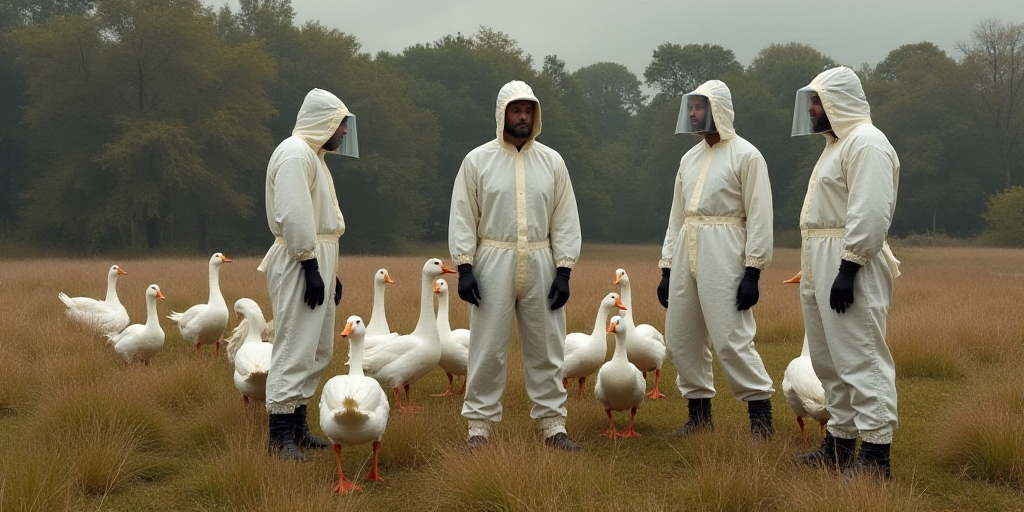Background on Key Figures and Relevance
The United States Department of Agriculture (USDA) is facing a significant challenge as it grapples with the longest avian influenza outbreak in its history and prepares for the arrival of the New World bark beetle, a destructive pest found in Mexican livestock.
The USDA, a federal executive department responsible for developing and executing policies related to farming, agriculture, and food, has been undergoing staff reductions due to the Trump administration’s push for resignations. This exodus has left fewer specialists to address animal health issues, including the ongoing avian influenza outbreak and potential bark beetle infestation.
Impact on Animal Health Expertise
Justin Smith, Commissioner of Animal Health in Kansas, expressed concern over the decreasing number of veterinarians at the USDA. This reduction may lead to slower response times and a diminished capacity to meet local veterinary needs, as fewer professionals are available to handle regulatory requirements, disease investigations, and response planning.
Avian Influenza Outbreak
This year, egg prices reached record highs due to the devastating impact of avian influenza on millions of laying hens. Although recent weeks have seen a slowdown in cases, experts warn that outbreaks could resurface during the spring and fall migratory seasons of wild birds that spread the virus.
New World Bark Beetle Threat
The New World bark beetle, a carnovous pest, has been detected in Mexican livestock. Its potential arrival in the US poses a serious threat to agriculture and necessitates preparedness from animal health experts.
USDA Staff Departures
Approximately 15,000 USDA employees have accepted financial incentives to resign, accounting for about 15% of the agency’s workforce. This exodus is part of a broader federal workforce reduction effort led by business magnate Elon Musk.
Animal and Plant Health Inspection Service (APHIS)
The APHIS, which combats livestock diseases and crop-damaging pests, has lost 1,377 employees—approximately 16% of its workforce, according to a Reuters analysis of federal personnel office data.
Veterinary Services
Around 400 departing employees worked in the USDA’s Veterinary Services, comprising over 20% of its 1,850 staff members. This division operates in the US and globally, collaborating with farmers to detect animal diseases and control their spread.
The departures include 13 of the agency’s 23 regional veterinarians who oversee veterinary work nationwide, as per a Reuters review of exit personnel lists and a source familiar with the situation.
Animal Disease Testing Laboratory
Approximately 20% to 30% of the personnel at a USDA laboratory conducting animal disease tests, such as avian influenza, are leaving, according to a second source.
Key Questions and Answers
- What is the issue? The USDA is experiencing an exodus of veterinarians, support staff, and lab workers due to the Trump administration’s resignation incentives.
- Why is this a concern? Fewer experts mean slower response times and reduced capacity to address animal health needs, especially with ongoing avian influenza outbreaks and the looming threat of the New World bark beetle.
- How many USDA employees are leaving? Approximately 15,000 USDA employees have accepted financial incentives to resign.
- Which divisions are most affected? The Animal and Plant Health Inspection Service (APHIS) and Veterinary Services have experienced significant staff reductions.
- What are the potential consequences? Slower response times, diminished capacity to meet local veterinary needs, and increased vulnerability to animal disease outbreaks and pest infestations.






